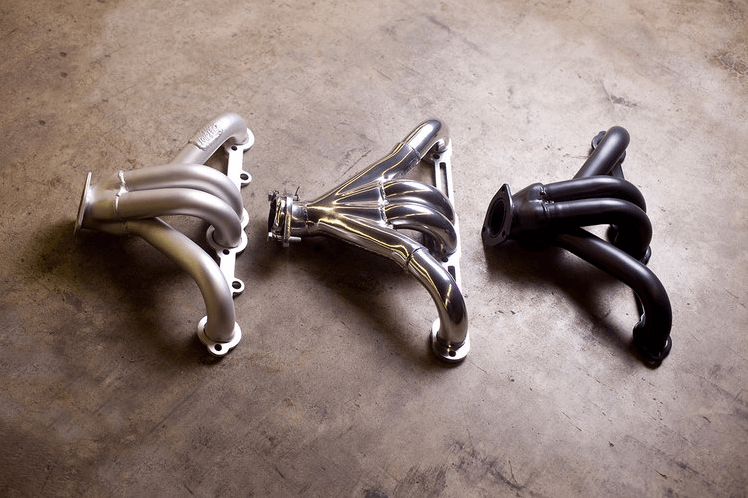What Are Ceramic Coated Headers?
There’s a well-known anecdote used in engineering, a fact-based narrative that talks of how the aerospace industry is the source of many of our current products. Time-proven by rocket scientists, ceramic coated headers represent a key technological development, one that was born in space-age rocket research, and one that transfers its benefits from these rocket components to our enthusiast exhaust system market, pushing performance figures to new limits.
What are Exhaust Headers?
Regular vehicles arrive fresh from the factory with standardized parts, components that don’t exactly set performance charts on fire. The engine and exhaust are efficient and road worthy but won’t set any land speed records or generate a grunt of noisy power. Exhaust headers are bolt on pipes, large-diameter tubes that are bent, shaped and mounted as an engine manifold replacement. The effect of this aftermarket addition is improved engine airflow and optimized engine performance through a dramatic reduction in piston back pressure. The headers are designed to draw the eye. The parts mount as a single unit, installing with elegant parallelism to modify the sound of the engine and enhance drive characteristics. As powerful as this addition is, ceramic coated headers take the product to the next level.
Injecting Ceramic-Backed Material Enhancements
The earthen benefits of a ceramic finish begin with heat subjugation, an aptitude for preventing heat-stressed headers from aging when a newly tuned engine pushes the car to the edge. The ceramic finish absorbs heat and ends thermal cycling, a phenomenon that causes parts to enter extreme heating and cooling phases. A high quality header, a kit part that adheres to the above airflow enhancing model, is wonderfully efficient, but a state-of-the-art ceramic coating adds to this efficient profile by infusing the assembly with ceramic, a material that dissipates super-hot surface heat. In turn, as you enjoy your newly mounted ceramic coated headers, the improved thermal characteristics of the product will have a natural knock-on effect, improving performance as energy losses are reduced, losses that can be redirected back toward the engine. The result is a boost in horsepower.
Weighing the Sound and Style Benefit
The coating acts as a protective thermal buffer, but it also functions as a mechanical barrier, placing a hard-as-nails outer layer between the road and this heat-stressed assembly of alloy-reinforced tubes. The coating rejects road salts and prevents corrosion. It stabilizes the metal during peak thermal activity, stopping engine-driven exhaust from acting as a catalysing agent and aging the assembly. The same thermal mitigation attribute protects nearby engine parts and the inner parts of the engine exhaust. In fact, on thinking of the innards of the exhaust, a superior coating adds ceramic protection to the inside of the header, thus protecting the pipes from corrosive engine fumes.
Main Source: This Post "What Are Ceramic Coated Headers?" appeared first on "Muffler & Exhaust Tips"




Comments
Post a Comment